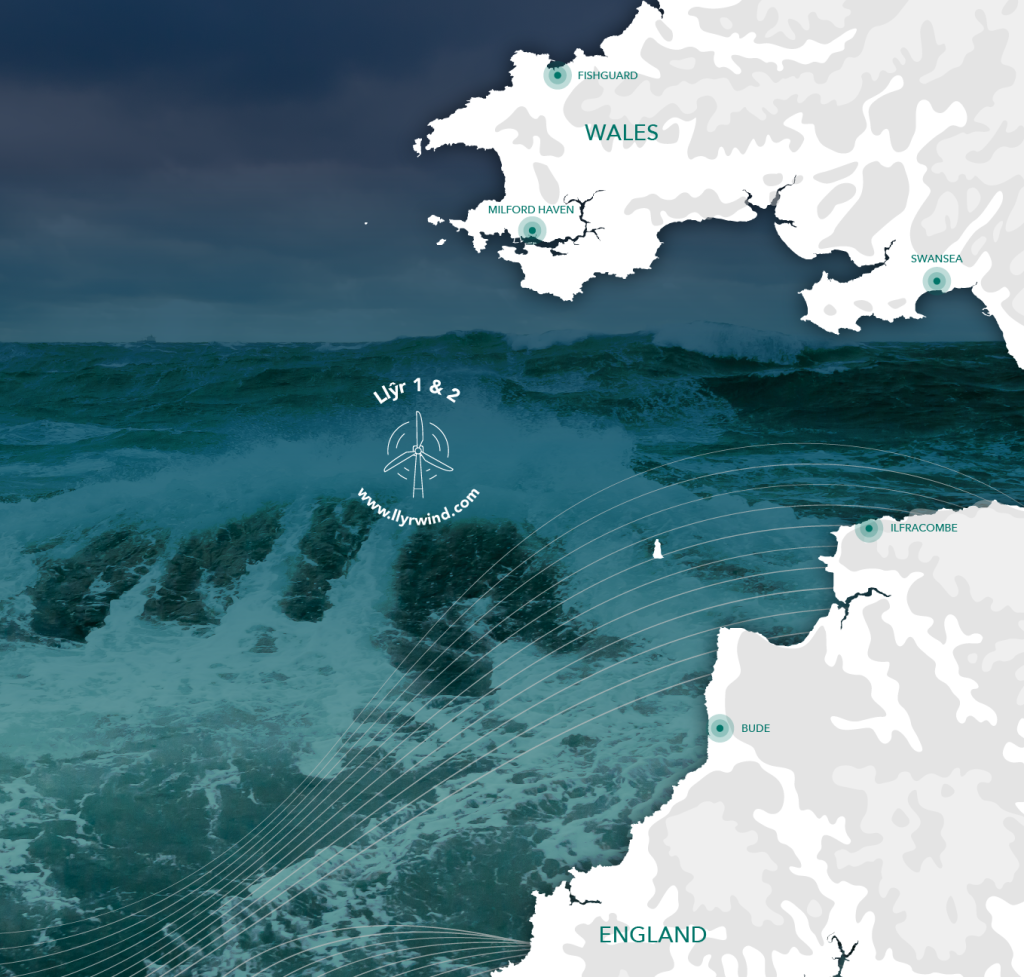About the Llŷr Project
200MW Test & Demonstration Projects in the Celtic Sea
- Pathfinder projects accelerating the development of the UK floating offshore wind industry
- Piloting the development, construction, installation and operation of floating offshore wind at a large scale in UK waters
- Assisting the learning of how floating wind interacts at a large scale with the natural environment and local interests, to better understand the benefits and challenges and to identify opportunities to enhance the local environment
- Developing and refining installation and O&M methodologies crucial for the successful deployment of commercial scale projects
- Supporting the establishment and development of an indigenous UK offshore floating wind industrial capability in the Celtic Sea region
- Maximising the local UK supply chain and employment opportunities and benefits

Location of Project
The Llŷr 1 & 2 wind farms are proposed floating offshore wind developments in the Celtic Sea, within Welsh Waters, offshore from the Pembrokeshire coastline. At its closest point, the boundary of the proposed area for lease for the Projects is approximately 38 km from the Lundy Island shore and 31 km from the Welsh coastline and consist of two 50 km2 “areas of search” for the location of the wind farms. The eventual extent of area occupied will be reduced following the appropriate site investigation and detailed design work.
About Llŷr 1 & 2
Llŷr 1 & 2 will comprise of two demonstration projects using two different floating offshore wind platform technologies:
- Up to 10 wind turbine generators per project
- Up to 10 floating platforms
- Mooring infrastructure
- Each project will have up to two export cables within one export cable corridor to the landfall location at Freshwater West
Turbine Design
The proposed turbine design will be visually similar to a ‘conventional’ offshore wind turbine, though the internal technical design differs and the turbine is larger with a higher generation capacity.
The turbines will integrate with a floating platform, utilising a tension leg or catenary mooring system to secure the platform to the seabed. The mooring radius may vary between 50 to 800 meters depending on the mooring arrangement used.
We have shortlisted our technology partners and will hope to make announcements in 2024. We will then be able to provide more information.
Cable Routes
Once the power has been generated, it needs to be transported to the shore. We will use up to two cables to do this. The route these offshore export cables will follow has been determined by the landfall location (the point at which the cables come ashore), as well as environmental constraints.
The offshore export cables will bring the power to the shore. It then needs to be transported to the point at which we can connect to the National Grid. The closest connection point is adjacent to Pembroke Power Station and we have applied to National Grid Electricity System Operator (NGESO, the organisation responsible for connections to the National Grid) to connect here.
